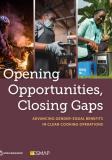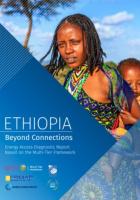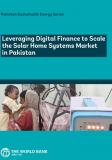Publications
Located in the Horn of Africa, Ethiopia is the second most populous country in Sub-Saharan Africa, home to more than 100 million people. Over 80 percent of Ethiopia's population live in rural areas, with agriculture functioning as the backbone of the country's economy. In the past decade, Ethiopia has become one of the world's fastest growing economies, with a 10.9 percent growth rate that represents twice the region's average growth rate of 5 percent. This growth positively impacted the country's extreme poverty rate, which fell 24 percentage points between 2000 and 2011.The Ethiopian government has made universal access to electricity a goal that it aims to reach by 2025; it aims to achieve this by including off-grid technologies — inclusive of mini-grids and off-grid solar solutions — in its universal electrification strategy. The government has also made access to modern energy cooking solutions a priority, which is significant in a country that traditionally uses biomass as its primary fuel (evident in more than 90 percent of the country's households). To learn more about these facts and the Multi-Tier Framework (MTF) results and analysis on Ethiopia's energy access rates, please visit MTF's country web page, engage with dynamic data, and download MTF's comprehensive Energy Access Country Diagnostic Report: https://energydata.info/dataset/ethiopia---multi-tier-framework--mtf--survey--2018-
Energy Access Diagnostic Report Based on the Multi-Tier Framework (MTF): Beyond Connections
Padam, Gouthami; Rysankova, Dana; Portale, Elisa; Koo, Bryan Bonsuk; Keller, Sandra; Fleurantin, Gina. 2018. Ethiopia – Beyond Connections: Energy Access Diagnostic Report Based on the Multi-Tier Framework. World Bank, Washington, DC. © World Bank. License: CC BY 3.0 IGO. https://openknowledge.worldbank.org/handle/10986/30102


